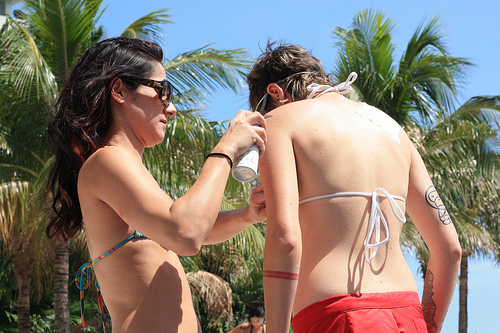
Be "Sun Smart": Always Apply Sunscreen And Know Your SPF Values: Protection Will Prevent
Sunscreens are available in creams, sprays, wipes, balms, and other forms. They are usually applied to the skin as a protection against the sun’s UV rays. However, they do not provide total protection against the harmful rays that can wreak havoc on our skin and overall health. To this end, every precaution should be taken. It is a good idea to read the label before purchasing sunscreens, and check their expiration dates. Since many products applied to the skin can cause irritation, sunscreen products are no exception and a small amount should be applied to a small area on the inside of the elbow for 2-3 days to test for any negative reaction to the product. Reading labels will also inform you of the level of protection a particular sunscreen provides. Those that offer "wide spectrum protection" will protect the skin from both UVA and UVB rays and will contain sun protective factors (SPFs). SPF values of 30 and/or higher are usually recommended, and should provide adequate protection from the sun.Those who are very fair, in most cases will require an even higher number than 30 for extra protection. Since SPFs now are as high as over 100, protection can...
Sunscreens are available in creams, sprays, wipes, balms, and other forms. They are usually applied to the skin as a protection against the sun’s UV rays. However, they do not provide total protection against the harmful rays that can wreak havoc on our skin and overall health. To this end, every precaution should be taken. It is a good idea to read the label before purchasing sunscreens, and check their expiration dates. Since many products applied to the skin can cause irritation, sunscreen products are no exception and a small amount should be applied to a small area on the inside of the elbow for 2-3 days to test for any negative reaction to the product. Reading labels will also inform you of the level of protection a particular sunscreen provides. Those that offer "wide spectrum protection" will protect the skin from both UVA and UVB rays and will contain sun protective factors (SPFs). SPF values of 30 and/or higher are usually recommended, and should provide adequate protection from the sun.Those who are very fair, in most cases will require an even higher number than 30 for extra protection. Since SPFs now are as high as over 100, protection can be tailored according to skin type and required protection. In essence, a sunscreen with a SPF value of 15 will filter 93% of the UVB rays we are exposed to, SPF 30 filters approximately 97%, SPF 50 filters close to 98% of UVBs and SPF 100 sunscreens filter approximately 99% of the sun's dangerous rays. However, as mentioned earlier, sunscreens do not offer complete protection against the sun, and most people do not think to apply sunscreen or enough sunscreen, so they are usually more at risk as there is little to no protection against UVBs.
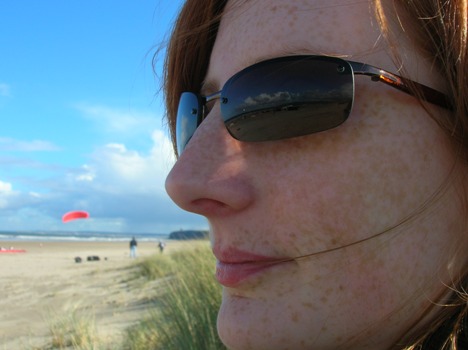
Wear Sunglasses: How To Protect Your Precious "Peepers" From Those Harmful UV Rays
Protection from the sun, includes more than the skin. Spending long hours in the sun without protection can wreak havoc on your eyes by increasing your chances of eye diseases and other serious eye conditions. As such, it is important to wear sunglasses with UV-blockers in order to protect the eyes and the very delicate skin around them. Your eyes are precious, never assume and be naive. As a rule of thumb, sunglasses without tags should be considered as simply offering no UV protection whatsoever. As with sunscreens, tags should be read and checked carefully. Because they are dark, not all sunglasses offer protection. Always check for an American National Standard Institute (ANSI) label when shopping for protective sunglasses. Please keep in mind that most "cosmetic" sunglasses will block 70% or less UV rays. That said, the recommended protective sunglasses should ideally block 99% to 100% of both UVA and UVB radiation. The tags should also read: “ 400 nm of UV absorption” or “Meets ANSI UV Requirements” mean the glasses block at least 99% of UV rays. Additionally, you will be more protected from the sun's rays and from different directions by wearing glasses with larger frames, and ideally...
Protection from the sun, includes more than the skin. Spending long hours in the sun without protection can wreak havoc on your eyes by increasing your chances of eye diseases and other serious eye conditions. As such, it is important to wear sunglasses with UV-blockers in order to protect the eyes and the very delicate skin around them. Your eyes are precious, never assume and be naive. As a rule of thumb, sunglasses without tags should be considered as simply offering no UV protection whatsoever. As with sunscreens, tags should be read and checked carefully. Because they are dark, not all sunglasses offer protection. Always check for an American National Standard Institute (ANSI) label when shopping for protective sunglasses. Please keep in mind that most "cosmetic" sunglasses will block 70% or less UV rays. That said, the recommended protective sunglasses should ideally block 99% to 100% of both UVA and UVB radiation. The tags should also read: “ 400 nm of UV absorption” or “Meets ANSI UV Requirements” mean the glasses block at least 99% of UV rays. Additionally, you will be more protected from the sun's rays and from different directions by wearing glasses with larger frames, and ideally wearing if needed, prescription glasses and contact lenses, that block UV rays. However bear in mind that since contact lenses cover just a small area, 'doubling up' on eye protection such as wearing sunglasses while wearing contact lenses will offer bonus protective benefits.
- Important notification about information and brand names used in this slideshow!
- Photo courtesy of rachelg by sxc.hu : www.sxc.hu/photo/731250
- www.cancer.org
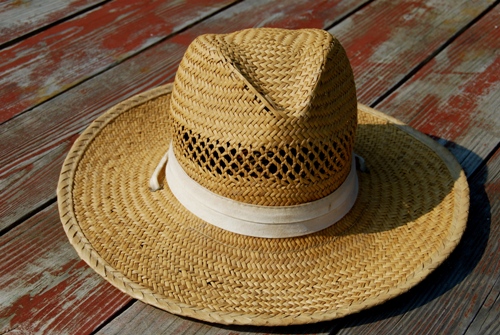
Be Safe And Chic At The Same TIme: Wear A Hat For Sun Protection
Protection from the skin can be quite chic. During the cold winter months, we wear hats to stay warm and protect from the cold. Similarly, during the summer you should also wear hats to protect you from the dangerous UV rays of the sun. However, not every hat will protect from the sun. For example, straw hats that are not as tightly woven are not as protective. Similarly, baseball caps will only protect your scalp, and not the other areas where skin cancers tend to develop, such as the ears and neck. Ideally, a hat that will offer the protection you need from the sun, should have a brim that is approximately 2- to 3-inch around. This size will protect the eyes, head, forehead, ears, and the nose. Even better, for added protection if the underside of the hat's brim is non-reflective , this will help to lower the UV rays closer to your face from reflective areas and surfaces in the environment such as glass, metals, or water.
- Important notification about information and brand names used in this slideshow!
- Photo courtesy of andrewatla by sxc.hu : www.sxc.hu/photo/866220
- www.cancer.org/cancer/skincancer

Sun Poisoning And Its Many Dangers
Sun poisoning is dangerous and should not be taken lightly. The scientific name for sun poisoning is photodermatitis. It is a condition that usually starts with an awful, painful, and terribly hot, itchy, burning of the skin from overexposure to the sun. Severe overexposure to the sun results in very nasty sunburns that hurt constantly and literally feel as if someone is slowly peeling and at times ripping your skin off. Even worse? Sun poisoning can result in skin cancer and even death. Many people do not realize they have been poisoned from the sun, since sunburns typically occur later in the day, and it also takes several hours following exposure for symptoms to show up, and for the body to respond. This makes it even more critical to protect, prevent and take all the necessary precautions before soaking up the sun.
- Important notification about information and brand names used in this slideshow!
- Photo courtesy of florinf by sxc.hu : www.sxc.hu/photo/935797
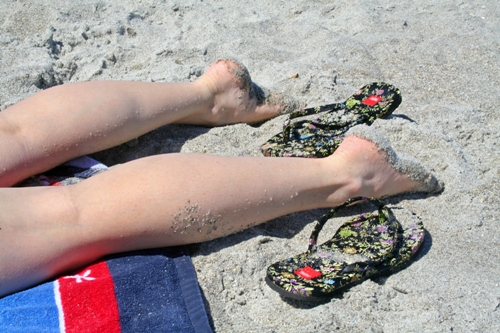
Knowledge Is Priceless: Be Sure You Can Recognize The Symptoms Of Sun Poisoning
Sun poisoning is dangerous, and comes from sunburn which is an inflammation of the skin from the overexposure to the sun's UV radiation. That said however, you can still enjoy the sun, but like most things, you should do so in moderation and with adequate protection. Knowing the symptoms of sun poisoning is important, since overexposure can be quite harmful, steps should be taken to limit the exposure to UV rays, however if and when the condition presents, knowing the symptoms could be life-saving. The most common symptoms that usually present immediately after overexposure include, the tender, painful, itchy, burning, dry, swollen peeling skin. Other symptoms from sun poisoning include but are not limited to: • Vomiting • Headaches • Nausea • Exhaustion • Dizziness • Rapid pulse • High fevers and chills • Rapid Breathing • Unconsciousness • Dehydration • Shock • Blisters • Pain and soreness • Increased heartbeat • Peeling, sore and tender skin • Numerous Infections • Blurred vision and damaged eyes
- Important notification about information and brand names used in this slideshow!
- Photo courtesy of CWMGary by sxc.hu : www.sxc.hu/photo/792321
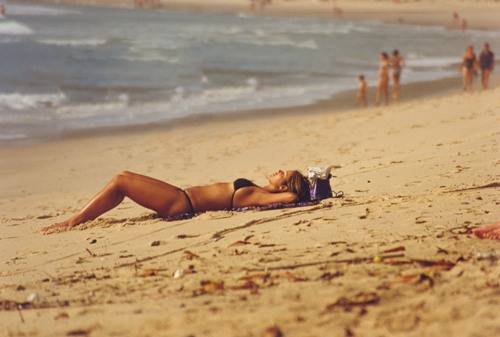
The Good News? Sun Poisoning Is Treatable
In most cases, milder, uncomplicated cases of sun poisoning that occur from simply lying out in the the sun for that perfect tan, do not really require medical attention. Rather they can be treated with OTC medications, and natural home remedies. Some of these include but are not limited to: Ibuprofen, acetaminophen and even aspirin, rehydrating with water and coconut water which contains generous amounts of electrolytes. Additionally, not shaving and applying a cool compress to the affected areas and on the forehead will certainly help. Taking cool baths and showers with just water, and of course limit and avoid exposure to the sun for a while will also help to treat the effects of sunburn. If the burn is severe and presents with most or all of the symptoms mentioned earlier, a dermatologist should be contacted. He or she can then analyse the patient and determine how to treat him/her going forward. Common treatments that are usually prescribed include but are not limited to cortisteroids, and prednisone.
- Important notification about information and brand names used in this slideshow!
- Photo courtesy of zeafonso by sxc.hu : www.sxc.hu/photo/603181
- cancer.org
- cdc.gov
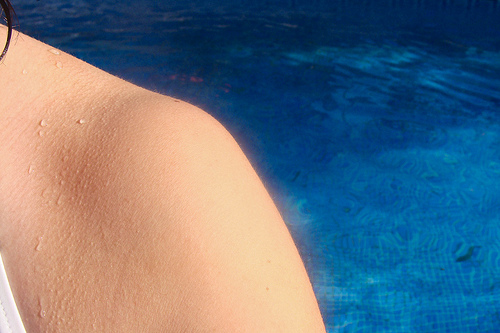
Know The Facts: Are You At A Higher Risk For Sun Poisoning?
While anyone can get sun poisoning, some people are more pre-disposed for different reasons. Examples include but are not limited to: Certain drugs and medications can make individuals more vulnerable to the sun's rays. Examples include birth control pills, and certain antibiotics. It is a good habit to check medications for sun-related requirements and restrictions. Those who are not accustomed to lots of sunlight , who are then suddenly overexposed to the sun. Those with fair-skin, blond or red hair and light colored-eyes. Since the melanin and pigmentation in their bodies is insufficient, there is no sound protective barrier from the sun.
- Important notification about information and brand names used in this slideshow!
- Photo courtesy of Gala Medina by Flickr : www.flickr.com/photos/galabassoon/4768203943/
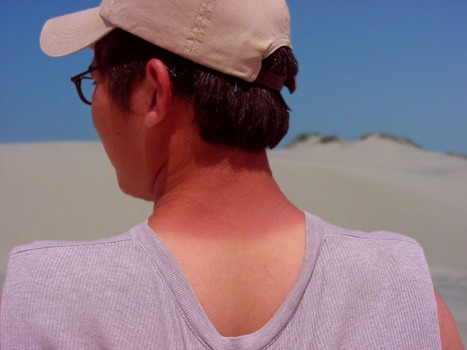
Caution: "Extremely Hot": Sunburns Can Be The Start Of Very Bad Things
Prevention is key: Exposure to the sun without protection often results in sunburn. Overexposure to the sun causes severe cases of sunburn or sun poisoning, a burn from ultraviolet (UV) rays from the sun that form blisters, sores and other skin inflammation. Although many individuals can treat their milder sunburns with 'over the counter' (OTC) medicines, however mild, skin damage from a sunburn should be a concern, and is a serious health issue. Those many mild but repeated sunburns damage the skin overtime and do cause skin cancer in many cases. As such, prevention, knowing the signs, causes, risks, and taking precautions will keep those harmful rays at bay.
- Important notification about information and brand names used in this slideshow!
- Photo courtesy of zulema011 by sxc.hu : www.sxc.hu/photo/417360

Just How "Skin-Friendly" Are Those Ultraviolet (UV) Rays? Not So Much Without Protection
With summer upon us, high temperatures, heat waves and emergency warnings are certain. Exposure to the sun is a great source of Vitamin D. However, as the old adage goes "too much of a good thing can be bad for you." Ultraviolet rays are not as 'skin friendly' as we would like them to be. As such, sun exposure should be kept in moderation since the rays from the sun (ultraviolet or UV) rays are very powerful, and they are not visible. When UV rays come in contact with our skin, they penetrate the skin's outer layer and damage the inner cells. This is when sunburn occurs. The more serious and severe cases of sunburn result in the actual sun poisoning. While not all UV rays are harmful, the dangerous types damage and kill skin cells and DNA.
- Important notification about information and brand names used in this slideshow!
- Photo courtesy of Ayla87 by sxc.hu : www.sxc.hu/photo/1392577
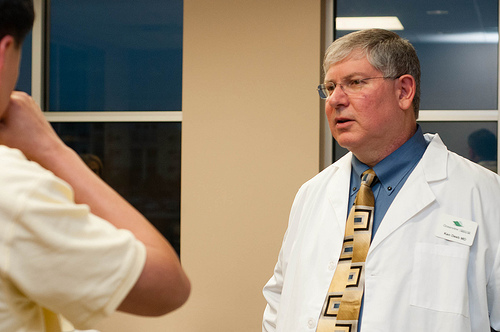
Take Care, Play It Safe: Seek Medical Treatment When In Doubt
While most sunburn sufferers can relieve their discomfort with over the counter painkillers and anti-inflammatory drugs, it is critical to seek professional help from a medical expert such as a dermatologist or your family physician. Particularly if you have a prolonged fever after overexposure to the sun, you should see a doctor immediately. Do not wait. Play It safe. In most cases , and especially very severe ones, a doctor will typically prescribe topical steroids for anywhere from several days to two weeks depending on the severity. In very extreme cases where there is a great deal of swelling, iitching, and pain a doctor will also prescribe oral steroids to speed up the recovery time, and alleviate the discomfort. In the meantime, Let's recap some tips to help you maintain protection and enjoy the summer while it is still here: Wear UV blocking sunglasses, protective hats, and also apply protective lip balm Wearing less in Summer is not necessarily better. Covering the skin by wearing pants and long sleeved tops will offer more protection from the sun. So will light colored, breathable clothing. Since UV rays are more powerful between 10 a.m. and 4 p.m, it would be a good...
While most sunburn sufferers can relieve their discomfort with over the counter painkillers and anti-inflammatory drugs, it is critical to seek professional help from a medical expert such as a dermatologist or your family physician. Particularly if you have a prolonged fever after overexposure to the sun, you should see a doctor immediately. Do not wait. Play It safe. In most cases , and especially very severe ones, a doctor will typically prescribe topical steroids for anywhere from several days to two weeks depending on the severity. In very extreme cases where there is a great deal of swelling, iitching, and pain a doctor will also prescribe oral steroids to speed up the recovery time, and alleviate the discomfort. In the meantime, Let's recap some tips to help you maintain protection and enjoy the summer while it is still here: Wear UV blocking sunglasses, protective hats, and also apply protective lip balm Wearing less in Summer is not necessarily better. Covering the skin by wearing pants and long sleeved tops will offer more protection from the sun. So will light colored, breathable clothing. Since UV rays are more powerful between 10 a.m. and 4 p.m, it would be a good idea to avoid being outside during such hours, and if you really have to be outdoors, avoid overexposure, look for shady areas, slather on that sunscreen, and know when it is time to reapply sunscreen. Finally, Summer is never long enough for most, so why hibernate? Get out there and have fun. Enjoy! soak up that sun but please..do use protection-and as always, prevention is key: Play it safe.
- Important notification about information and brand names used in this slideshow!
- Photo courtesy of Oceanview Med Spa by Flickr : www.flickr.com/photos/oceanviewmedspa/8122847105/


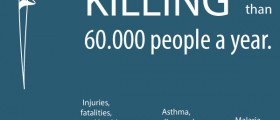















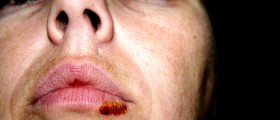




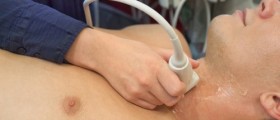

Your thoughts on this
Loading...